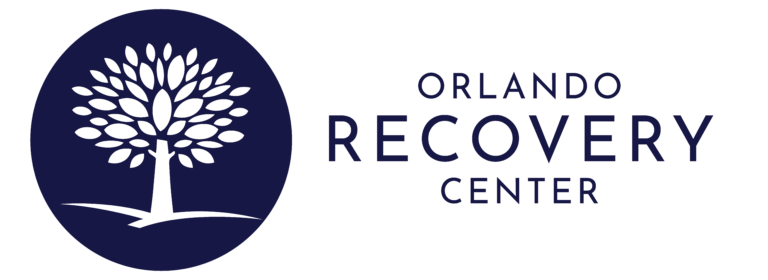Key Takeaways
- Opioids, including prescription drugs and illicit substances, interact with the nervous system to relieve pain but have a high potential for misuse and addiction.
- Commonly abused opioids include prescription medications like oxycodone and hydrocodone, synthetic opioids like fentanyl, and illegal drugs like heroin.
- Physical signs of opioid addiction include withdrawal symptoms, changes in appearance, and health complications such as respiratory depression and increased risk of infectious diseases.
- Behavioral indicators of opioid addiction encompass social withdrawal, mood swings, changes in habits, and cognitive impairments.
- Medication-assisted treatment (MAT) combined with behavioral therapies is effective for managing opioid addiction and supporting recovery.
- Support groups and comprehensive treatment strategies play a crucial role in the recovery process for individuals with opioid addiction.
What are Opioids?
Opioids are a class of drugs that include both prescription medications and illicit substances, all of which interact with the nervous system to alleviate pain. The term “opioids” covers a range of natural, semi-synthetic, and synthetic drugs derived from the opium poppy or synthesized in laboratories. The primary medical use of these substances is for pain relief, particularly in cases of moderate to severe pain that may not respond to other analgesics.
Opioid Side Effects and Impact on the Body
When opioids bind to specific receptors in the brain, they can create a sense of euphoria in addition to pain relief, which contributes to their potential for misuse. Long-term use or misuse of opioids can lead to dependence and addiction, a condition known as Opioid Use Disorder (OUD).
Side effects of opioid use can range from:
- Drowsiness
- Constipation
- Nausea
- Respiratory depression
- Overdose (particularly with potent synthetic opioids like fentanyl)
Opioid Addiction and Overdose
Due to the high risk of addiction and overdose, it’s crucial for individuals prescribed opioids to follow their healthcare provider’s instructions and be aware of the potential for dependence. For those struggling with opioid addiction, treatment often involves a combination of medication-assisted therapy and counseling. The Centers for Disease Control and Prevention (CDC) and the National Institute on Drug Abuse (NIDA) provide extensive resources on opioids, their effects, and treatment options for OUD.
Treatment Can Be Life Changing
Whether you are struggling with addiction, mental health or both, our expert team is here to guide you every step of the way. Don’t wait— reach out today to take the first step toward taking control of your life.
Commonly Abused Opioids
Opioids are a class of drugs that include both prescription medications and illegal substances, all of which can be highly addictive. They work by binding to opioid receptors in the brain, spinal cord, and other areas of the body, reducing the perception of pain and promoting feelings of pleasure. However, their misuse can lead to serious health issues, including addiction and overdose. The most commonly abused opioids include:
- Prescription Opioids: These are medications prescribed for pain relief. Common examples are oxycodone (OxyContin), hydrocodone (Vicodin), morphine, and codeine.
- Fentanyl: A synthetic opioid that is up to 100 times more potent than morphine. It is both a medically used drug and one that is illicitly manufactured and abused.
- Heroin: An illegal drug derived from morphine, commonly abused for its euphoric effects.
According to the Centers for Disease Control and Prevention (CDC), opioid overdose deaths have been a significant public health issue, with more than 75% of drug overdose deaths in 2021 involving an opioid. The rise in opioid abuse has led to increased efforts in public education, treatment availability, and research into substance use disorders. It is essential to recognize the risks associated with opioid misuse and to seek appropriate treatment for opioid use disorder to prevent its devastating consequences.
Physical Signs of Opioid Addiction
Opioid addiction, a severe and life-threatening condition, manifests through various physical signs that can be observed in individuals struggling with opioid use disorder (OUD). One of the most critical aspects of recognizing opioid addiction is being aware of these physical symptoms, which can provide early indicators of the need for medical intervention and treatment.
According to Yale Medicine, the misuse of opioids can lead to a heightened risk of accidents and infectious diseases such as HIV, hepatitis B and C, and bacterial endocarditis. These risks are particularly elevated with the use of injectable opioids.
Withdrawal Symptoms
Physical dependence on opioids often results in withdrawal symptoms appearing within hours to days after the last use. Common withdrawal symptoms include:
- Muscle aches
- Agitation
- Anxiety
- Sweating
- Abdominal cramping
- Diarrhea
- Nausea
Long-term opioid use can also lead to health complications such as:
- Constipation
- Sleep disturbances
- Decreased libido
- Menstrual irregularities
- Overall deterioration in physical health
The Cleveland Clinic highlights that FDA-approved medications like methadone and buprenorphine are used to manage withdrawal symptoms and cravings, emphasizing the importance of combining these with behavioral counseling for effective treatment.
Physical Appearance Changes in Opioid Addiction
Physical appearance can provide critical clues to recognizing opioid addiction. While the research provided discusses changes in appearance due to aging, cancer, and other health issues, it’s essential to differentiate these from the specific alterations caused by opioid misuse.
Opioid addiction can result in a range of physical changes that may be noticeable to others:
- Weight loss: Unexplained and rapid weight loss can be a sign of opioid addiction due to changes in diet and metabolism.
- Skin issues: Users may develop skin problems such as abscesses or track marks from injecting drugs, and a generally unhealthy appearance of the skin.
- Poor hygiene: A decline in personal grooming and hygiene may be evident as the addiction takes precedence over self-care.
- Dental problems: Opioids can cause dry mouth, leading to tooth decay and gum disease, which can become visible in a person’s smile.
- Facial changes: A gaunt, sunken appearance to the face may develop, along with dark circles under the eyes due to poor sleep and overall health deterioration.
It is important for loved ones to be aware of these signs and to understand that changes in appearance associated with opioid addiction often reflect a deeper struggle with substance use.
Behavioral Signs of Opioid Addiction
Opioid addiction often manifests through various behavioral changes that can serve as warning signs for loved ones and health professionals. According to resources from Mayo Clinic and Verywell Health, individuals struggling with opioid addiction may exhibit behaviors such as withdrawing from social activities, showing a loss of interest in hobbies, and associating with a new peer group. Additionally, noticeable shifts in mood, such as increased irritability and nervousness, as well as secretive actions and dishonesty, are common.
- Withdrawal from social commitments and activities
- Loss of interest in previously enjoyed hobbies
- Changes in social circles, often associating with new individuals
- Displaying irritability, anxiety, or nervousness
- Engaging in secretive behavior and lying
These behavioral changes may coincide with physical signs of addiction, but they can also occur independently.
Disruption of Habits and Routines
Opioid addiction often disrupts established habits and routines, which are repetitive behaviors that structure daily life. Neglecting hygiene, skipping meals, and withdrawing from social engagements are common signs as the compulsion to seek opioids takes priority. The National Institute of Diabetes and Digestive and Kidney Diseases underscores the importance of healthy routines for overall well-being, highlighting how opioid misuse can lead to harmful new habits and isolation from loved ones, necessitating intervention and treatment.
Social Withdrawal
Social withdrawal in opioid addiction signifies a voluntary reduction in social contact and activity engagement, often leading to isolation. Rooted in reasons like hiding substance use or feelings of shame, withdrawal may intensify loneliness and depression. Recognizing it as a sign of opioid addiction is vital for early intervention, with treatment focusing on psychological aspects to support holistic recovery. Research underscores the risks to emotional and physical health from prolonged withdrawal, emphasizing the importance of empathy, support, and encouraging social engagement alongside professional help.
Psychological Symptoms of Opioid Addiction
Opioid addiction, a chronic and relapsing condition, manifests through several psychological symptoms indicative of opioid use disorder (OUD).
Compulsive Use and Cravings:
- Compulsive use of opioids despite negative consequences
- Strong desire to stop using opioids
- Cravings and obsessive thinking about the drug
Emotional and Mood Disturbances:
- Anxiety
- Depression
- Irritability
- Drastic effects on emotional regulation
Cognitive Impairments:
- Issues with memory
- Attention difficulties
- Problems with decision-making
- Impact on daily functioning
Social and Behavioral Changes:
- Lack of interest in previously enjoyed activities
- Social withdrawal
- Focus shifts to obtaining and using opioids
Denial and Resistance:
- Denial of the severity of the problem
- Resistance to treatment
Treatment for OUD often includes medication-assisted therapy and behavioral counseling to manage withdrawal symptoms, reduce cravings, and address the underlying psychological aspects of addiction. Understanding and addressing psychological symptoms are vital for successful treatment and recovery.
Understanding Mood Swings as a Sign
Mood swings and emotional instability are often associated with various mental health conditions, including opioid addiction. These symptoms can manifest as rapid and extreme changes in mood, ranging from depressive lows to manic highs. The research indicates that mood instability is not only common but also an important feature of several psychiatric disorders, including addiction. People experiencing opioid addiction may exhibit emotional impulsiveness and affective lability, which refers to oscillating emotions that can significantly impact their daily functioning. The Mayo Clinic notes that bipolar disorders, which feature mood swings, can provide a framework for understanding the emotional highs and lows seen in opioid addiction. Interventions such as psychotherapy, as mentioned by the Cleveland Clinic, can aid in managing mood swings and treating the underlying addiction.
Cognitive Impairment in Opioid Addiction
Cognitive impairment encompasses a range of mental abilities affected by substance use, including
- Memory
- Problem-solving
- Attention
In the context of opioid addiction, cognitive impairment can manifest as
- Difficulty in performing complex tasks
- Memory lapses
- Reduced decision-making capabilities
Prolonged opioid use can lead to changes in brain structure and function, particularly in areas responsible for cognition and emotion regulation, such as the hippocampus. Opioid-induced cognitive impairment is a critical concern, as it can hinder an individual’s ability to engage in treatment and recovery effectively.
It may also impact daily functioning, leading to challenges in managing
- Personal affairs
- Work responsibilities
- Social relationships
Research in the field of addiction medicine is ongoing to understand the full extent of cognitive impairment caused by opioid use and to develop interventions that can address these cognitive deficits. Studies suggest that certain cognitive functions may improve with sustained abstinence and appropriate treatment, highlighting the importance of early detection and intervention in individuals with opioid addiction.
The Health Complications of Opioid Addiction
Opioid addiction can lead to a myriad of health complications that impact both the quality and longevity of life. Chronic use of opioids, whether prescription medications or illicit substances, can result in a range of adverse health effects.
Respiratory Depression: Some of the most pressing health complications include respiratory depression, which is a significant reduction in the ability to breathe and the leading cause of death in opioid overdose.
Infectious Diseases: Additionally, opioid addiction can lead to an increased risk of infectious diseases, such as HIV and hepatitis, due to risky behaviors like needle sharing.
Gastrointestinal Issues: Long-term opioid use can also cause gastrointestinal issues, including constipation and bowel obstruction, which may lead to further complications like bowel perforation.
Cardiovascular Problems: Cardiovascular problems can arise as well, with users potentially experiencing altered heart rates and increased risk of heart infection known as endocarditis. Kidney Damage: Furthermore, opioid addiction can cause liver and kidney damage, especially when substances are taken in ways not prescribed, such as crushing and snorting pills.
Mental health is not immune to the effects of opioid addiction either.
Mental Health Conditions: Users may experience increased anxiety, depression, and a potential worsening of pre-existing mental health conditions.
Hormonal Imbalances: Lastly, opioid addiction can lead to hormonal imbalances, affecting both sexual function and overall endocrine health.
It’s crucial for individuals struggling with opioid addiction to seek professional help to address these health complications and work toward recovery.
Guidance on Seeking Help for Opioid Addiction
If you or someone you know is struggling with opioid addiction, it’s crucial to understand the various avenues for seeking help. Opioid addiction helplines are a valuable resource, providing confidential assistance 24/7 to those affected by opioid addiction. These hotlines can serve as a first step in talking through the situation and exploring treatment options. The Substance Abuse and Mental Health Services Administration (SAMHSA) offers a treatment locator to find accredited programs, and the SAMHSA website itself is an authoritative resource for finding help and treatment.
Medication-Assisted Treatment (MAT)
Medication-assisted treatment (MAT) is an effective approach to managing opioid addiction, which may include medications such as Methadone, Buprenorphine, Naltrexone, and Naloxone, often combined with behavioral therapies. These treatments are designed to reduce withdrawal symptoms, prevent relapse, and treat co-occurring disorders. It’s essential for treatment to be individualized, addressing the unique needs of the person.
Emergency Services
For immediate assistance, individuals can call or text the national helpline at 988. It’s also important to educate oneself on the signs and symptoms of an opioid overdose and to have Naloxone available, a medication that can reverse an overdose if administered promptly. Recovery is possible, and with the right support and treatment, individuals can regain control over their lives and overcome the challenges of opioid addiction.
Navigating Support Groups for Opioid Addiction Recovery
For individuals grappling with opioid addiction, the Mayo Clinic emphasizes the value of support groups in bridging the gap between medical treatment and the need for emotional backing.
General Support Group
- Substance Abuse and Mental Health Services Administration (SAMHSA) offers a searchable database for local programs.
Peer-Led Support Groups
- National Alliance on Mental Illness (NAMI) provides peer-led groups, including those for families of individuals with mental health conditions.
- Anxiety and Depression Association of America (ADAA) offers online communities for anxiety and depression.
Specialized Support Groups
- HelpGuide.org outlines structure and benefits of support groups in healing and recovery.
- Psychology Today provides a directory for locating group therapy and support groups.
- International OCD Foundation (IOCDF) and Alzheimer’s Association offer resources for specific conditions.
- Depression and Bipolar Support Alliance (DBSA) offers in-person and online support groups for mood disorders.
It’s important to consult healthcare providers when considering support groups to ensure they complement the overall treatment plan.
Comprehensive Treatment Strategies for Opioid Addiction
Opioid addiction is a complex condition that requires a multifaceted treatment approach. According to the National Institute on Drug Abuse, effective treatments often involve a combination of medication-assisted treatment (MAT) and behavioral therapies.
Medication
MAT includes FDA-approved medications that will help manage withdrawal symptoms and cravings, thereby reducing the likelihood of relapse, such as
- Methadone
- Buprenorphine
- Naltrexone
Behavioral Therapy
Behavioral therapies are equally critical as they address the psychological aspects of addiction. These therapies help modify patients’ attitudes and behaviors related to drug use, enhance healthy life skills, and ensure ongoing support through recovery. The integration of medication with counseling and behavioral therapies can effectively treat the whole individual, which is essential for successful long-term recovery.
Comprehensive Care
It’s important to note that while there is no one-size-fits-all treatment, the goal of any OUD treatment is to enable individuals to achieve lasting abstinence and improve their quality of life. Access to comprehensive care, including evidence-based treatments and support systems, is crucial for individuals struggling with opioid addiction. The treatment journey may vary from person to person, but with the right combination of therapies, recovery is within reach.
Contact Us Today
If you or a loved one struggles with drug or alcohol addiction, Orlando Recovery Center is here to help. Our physician-led, evidence-based rehab programs include medical detox, inpatient and outpatient rehab, and a full continuum of care in between. Our compassionate team will help you start life fresh with the tools, coping strategies and resources you need to succeed. Don’t wait — contact a Recovery Advocate today to see how we can help.









